An interview with Camilo Erasso – Documenting the anti-government mass movement sparked by the infamous proposed tax bill.
“A social awakening. It has been motivated by repression and unrest.” Colombia Protests: Camilo Erasso.
Earlier this year, Colombian cities across the country saw great unrest as protests raged in the streets in opposition to the proposed tax rises. Morphing into a mass movement against the government, an International human rights body has now condemned the Colombian police together with the government for “excessive and disproportionate” use of force in its response. Spanning back until April of this year, civilians protesting in their local streets and in major cities including Bogota and Cali were met with considerable resistance and force in which dozens died and hundreds more sustained serious injury.
Beginning amid anger over a proposed COVID reform bill that would have lowered the threshold for taxing salaries, Colombians demonstrated in strong opposition as the proposed bill undeniably strengthened the ever more poignant gap between classes throughout the country. Despite the plan being withdrawn days after by the county’s President the momentum only grew and protesting became about wider social injustices including police violence and poverty.
Camilo Erraso distilled the moments, people and voices of those fighting for social equality and reformation. IMAGO spoke to him about his work documenting the protests across Colombia.
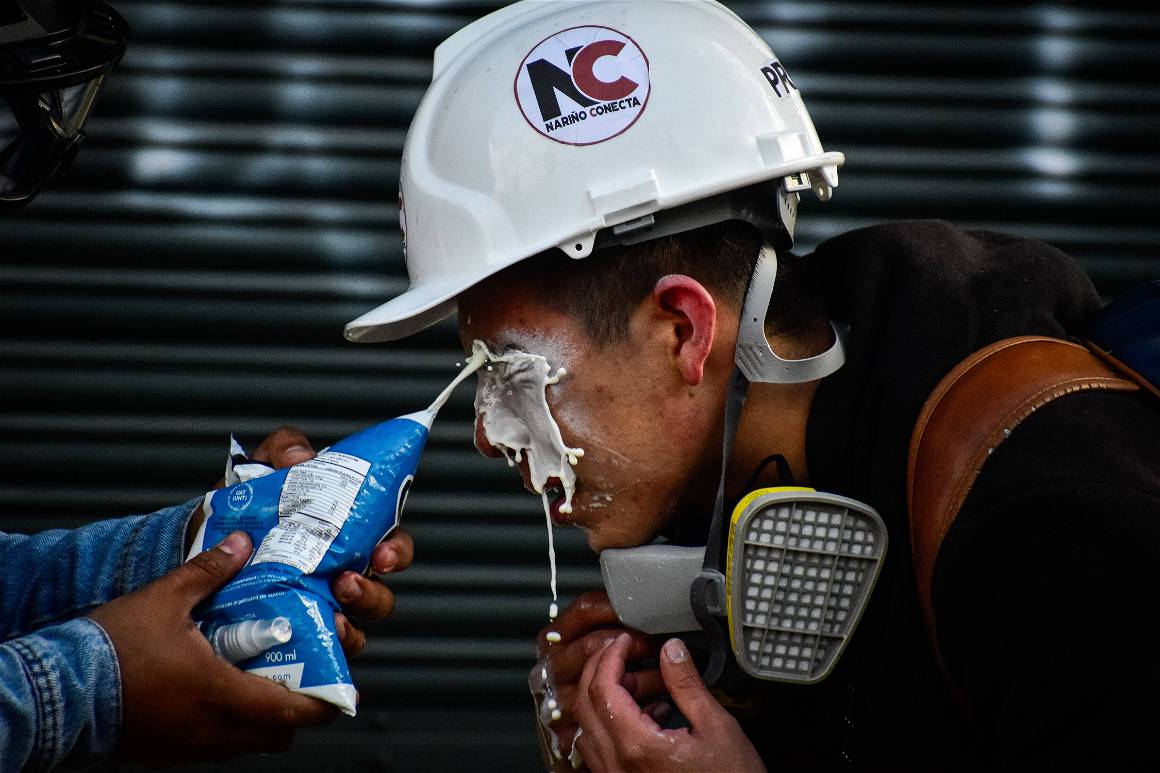
Can you tell us a little about yourself and your time as a photographer.
I started photography when I was 7 years old, I used to borrow a camera my mom used for her job as an attorney, in some family trips I used to borrow the camera, and walking with it taking photos of insects. 8 years later I got the opportunity to buy my own camera and I started learning all about photography and having the opportunity to see one of the most important festivities in my region and country, the Carnival of whites and Blacks “El Carnaval de Negros y Blancos” were I couLd evidence how professional photojournalists worked, after a couple years I got my accreditation approved with a entry level DSLR which I currently use, I got to capture euphoria and the moments of the carnival.
When I started college, in Colombia a big social movement was taking place, students decided to protest against the government of President Iván Duque on October 31st 2019, there I found love and passion for photojournalism and social photography in general, to have the ability to show what happened in the streets of my home town of Ipiales, Nariño y southern Colombia. After some years of research and achieving goals I decided to set a goal to reach a photo agency and found a place at Long Visual Press.
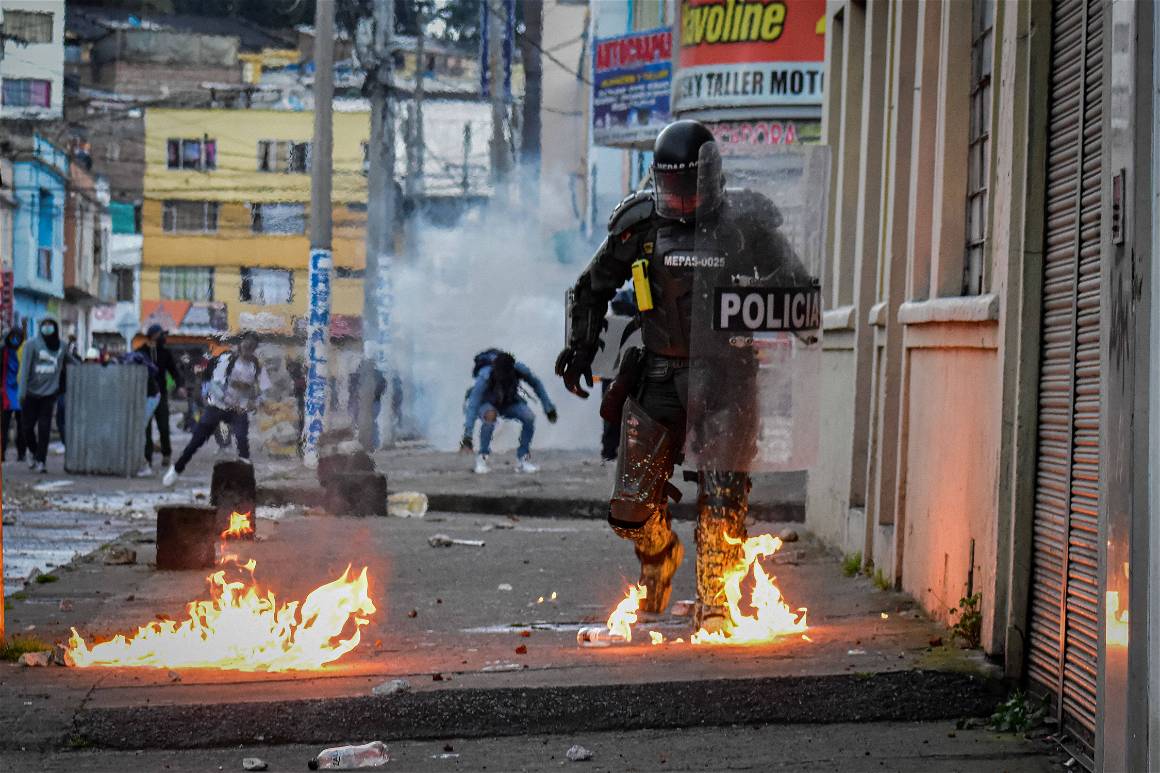
What has been the most defining moment you have witnessed or one photograph you have taken for you?
One of the most significant moments during my job was when a riot police officer pointed his tear gas launcher at me. I remember taking the photo and dodging the canister moments after I put down my camera.
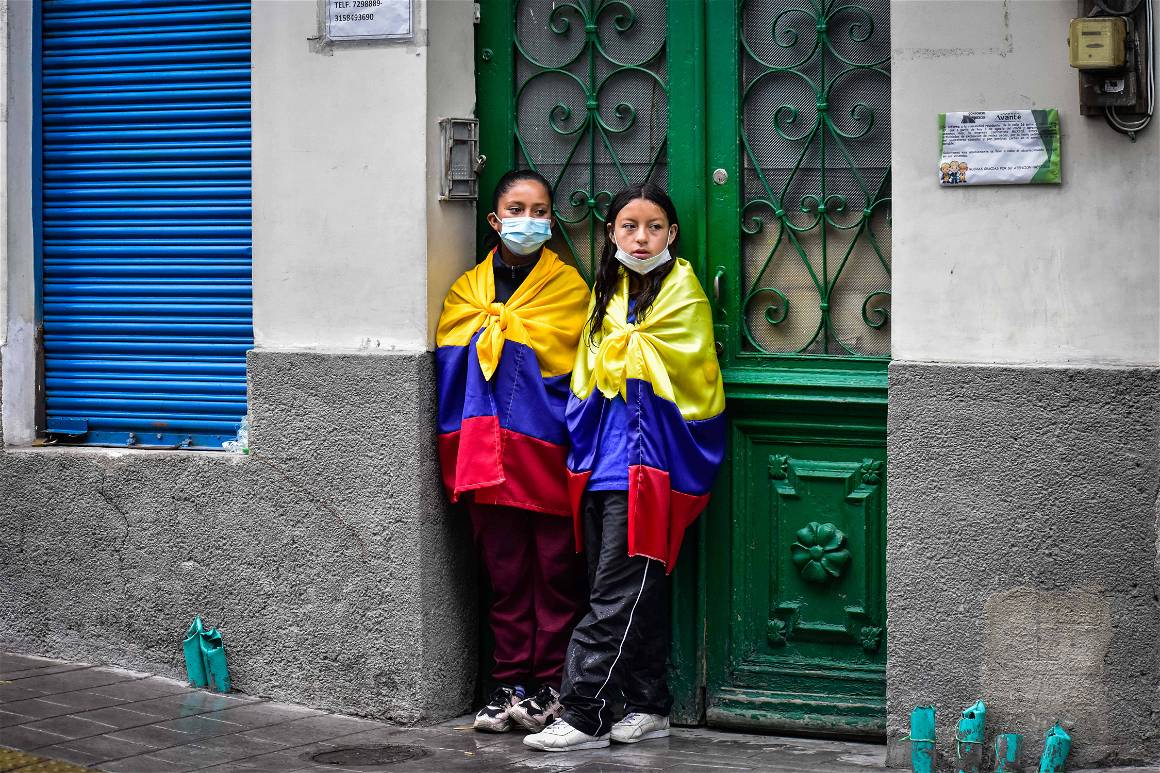
You recently documented the protests in Colombia right now. Protests have erupted all over the country after a tax reform bill was released by President Iván Duque. Despite the president withdrawing the new tax hike, the protests continued. In your own words, can you tell us a little bit about what they are about and the cause behind them?
Colombia’s antigovernmental protests are referred as the National Strike “Paro Nacional”, but since it began back in April 28 against the tax reform proposed by the government of president Duque, it has transformed into a social awakening and it has been motivated as repression and unrest by Colombia’s police and corruption that goes into the lowest in power.

Why did you feel it was important to go out and photograph the event?
At the beginning of the National Strike I found myself on my hometown of Ipiales – Nariño, a city that borders with Ecuador, but on the 30th of April I decided to go to the capital city of my state, the city of Pasto, I decided to go to the capital due to the increment of cultural events related to the ongoing protests, and also demonstrations that gathered more people than the ones in my hometown. About 200,000 people gathered to protest during the first month of demonstrations that were affected by vandalism ending in clashes with Colombia’s riot police (ESMAD, Escuadron Mobil Antidisturbios).
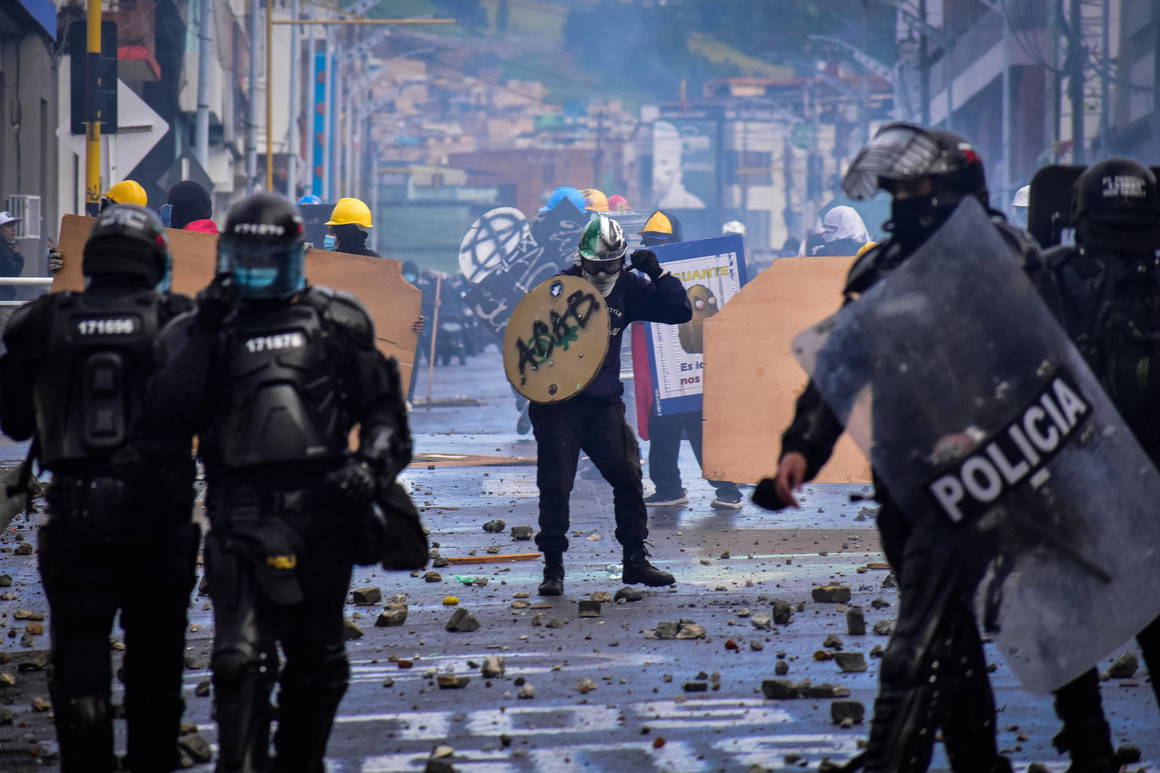
We have seen some quite violent and angry protesting. What was the atmosphere like when you were there?
Most of the protests that happen in Colombia have been carried out peacefully, but there are moments where demonstrators and Colombia’s police come face to face, it’s a moment where you can feel the tension. As a photographer I have learnt to read situations, especially those where any provocation will end up in dangerous clashes.
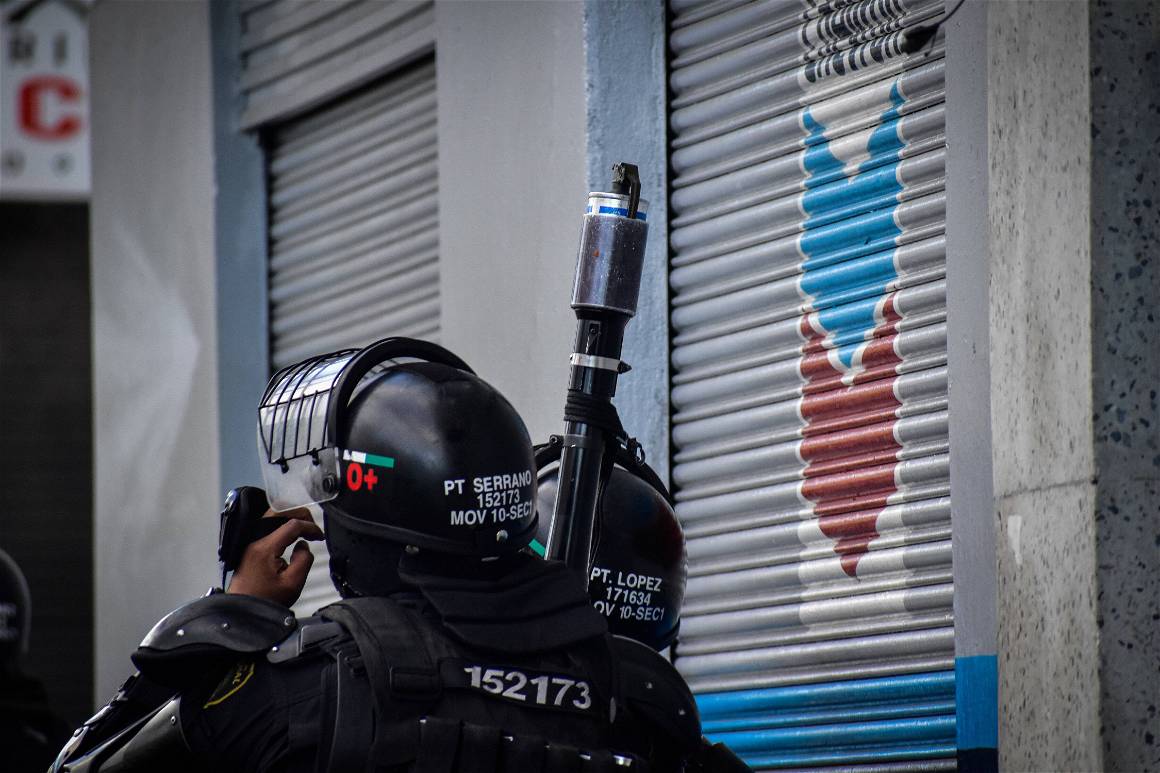
What did you experience, hear and see?
I have experienced love, fear, rage and importance among other feelings, I had the opportunity to cover clashes and demonstrations from both within the crowds and behind the scenes, having also covered emergency services and the teams that help demonstrators prepare prior to a day of protests. I have had a 360 degree experience into protests here, from things like how they asked for donations to buy medical supplies for the ones wounded from clashes, to how a demonstrator chanted from the bottom of his heart against repression and the government.
I also had the opportunity to experience this from the view of some of the police officers who are simply following rules and orders given. Listening to them helped me understand that their institution also has weaknesses, that they wished to earn more in their salaries and pensions and letting me know that some of them don’t disagree with the protests but they are ordered to keep order in the cities.


What is your aim in photographing and documenting these events? Do you have a particular goal or message that you want to communicate through your work?
One of the main objectives I have on my mind every time before leaving my home and head out to the protests is that I must portray, in the most truthful way, the feelings demonstrators have in each chant or cultural act. If there is a clash, one of my main goals is to show the anger demonstrators feel as well as having in mind that I cannot take political or ethical sides during the coverage, especially when unrest and violence starts.

Initially they were led by trade unions, pressure groups and activists but who did you see protesting? Did you speak to anyone about why they were there or their views? Did you discover anything about their cause?
Being at the heart of the protests I had the opportunity to talk to some demonstrators that expressed to me their willingness to fight from the rage they felt about the lack of opportunities, and also with hope to transform Colombia into something better for future generations. After some weeks and groups of people willing to be on the front line of the clashes, I got to realize these groups were made up of people from the most poor and unequal neighborhoods, people who felt abandoned by the state and government who claimed to improve conditions.

What began as a demonstration against tax rises erupted and grew into a mass movement against the government. Have you photographed anything like this previously? If so, what and where?
I got the chance to cover many of the protests that happened back in 2019 in protest of the lack of resources for public education in state universities. Some said that they were going to end up with so little or no resources at all to continue classes further. The fight for this ended up in several months of anti-government protests, further fueled by a previous tax reform presented by president Duque.
What do you believe to be the most poignant role of photography in today’s society?
With the amount of coverage social media has nowadays a photograph can go viral in a matter of minutes. Many photos don’t follow composition rules, but the real importance is the message that photo transmits, it can go from a good action shown, to something that emotionally affects the audience. That is where photography stands, it’s able to transmit emotions.
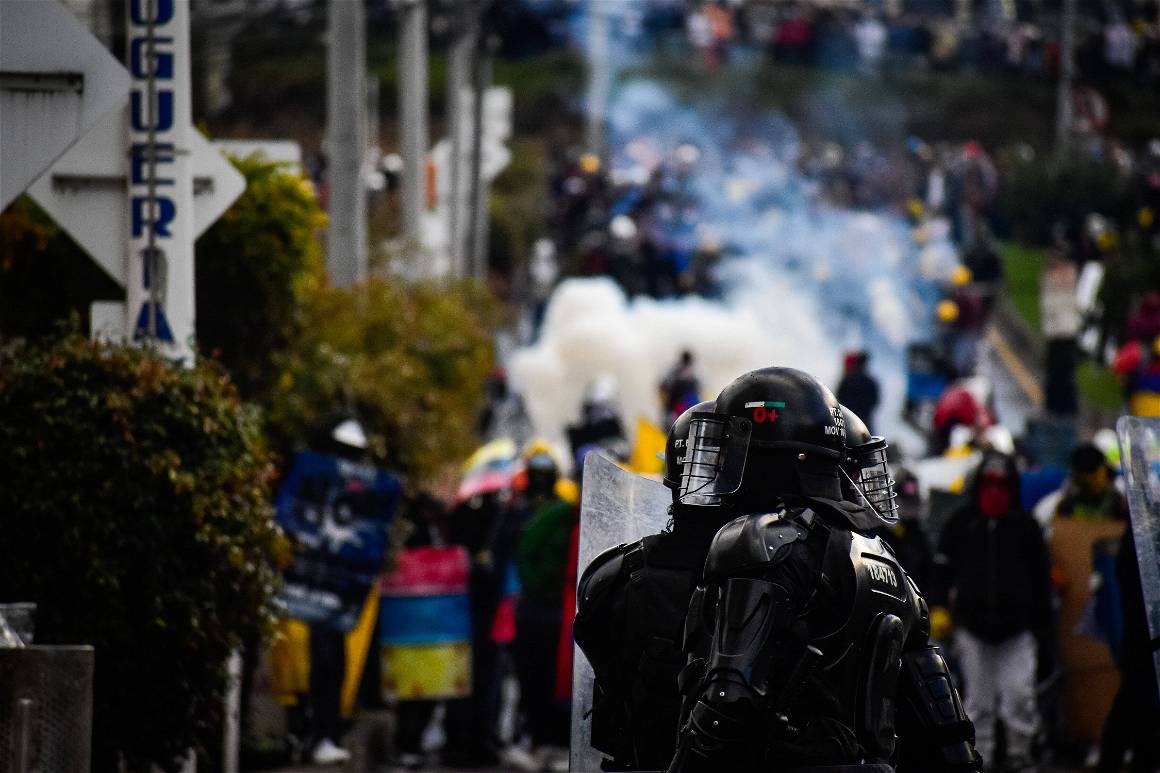
What do you think you gain from attending social and political events such as these, as a photographer, that you can’t experience elsewhere?
The reach I got with photography to meet and know people is something I wouldn’t be able to reach in other circumstances. Getting to know the real truth and necessities of the people who claim to leave violence behind and build a better country, without corruption, repression, and with politicians that govern far beyond their pockets. Years back people spoke behind fear, some of them didn’t want to protest because of the fear of them being killed or punished, but in the streets nowadays fear appears to be gone.
Camilo Erraso is a photojournalist based in Colombia. Working with ZUMA Wire his photographs cover social and political topics from the country. See other IMAGO Collections from Colombia here.


